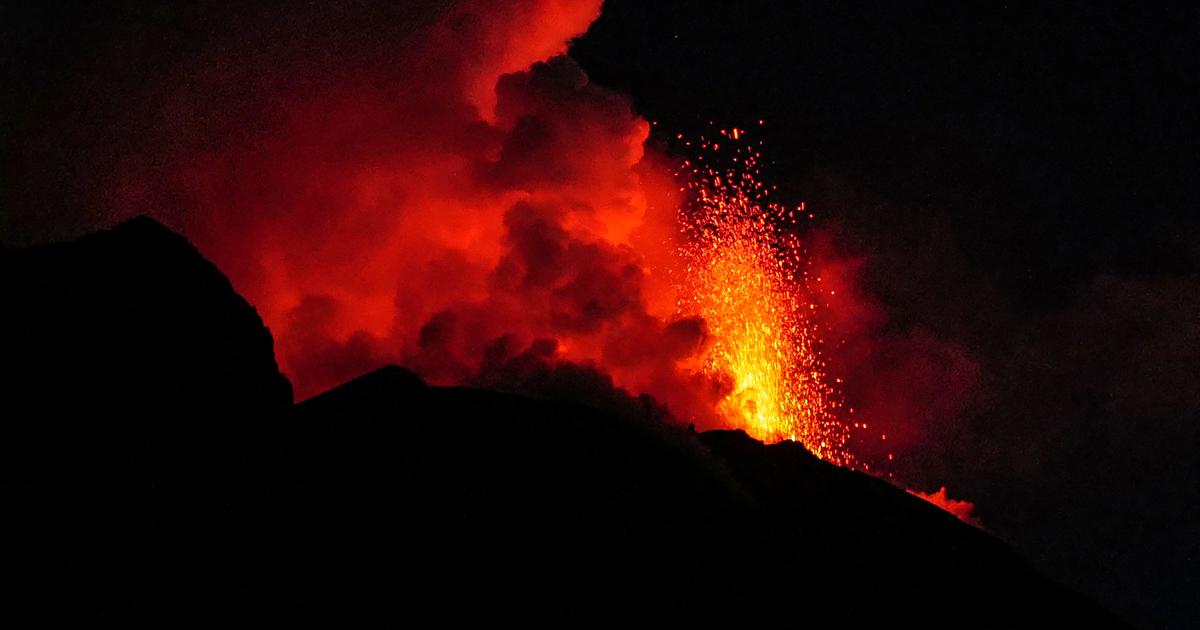Half a million inhabitants under the direct threat of a super volcano: the risk of eruption on the Phlegraean Fields, near Naples, has never been so important, warns an Anglo-Italian study published Friday, June 9.
Less known than Vesuvius, which wiped Pompeii off the map nearly two millennia ago, the Phlegraean Fields volcano, which last erupted in 1538, exposes hundreds of thousands of inhabitants to a deluge of lava, ash and rocks.
" READ ALSO USA: the volcano Kilauea again erupting in Hawaii
«
It's an extremely dangerous volcano," said Stefano Carlino, co-author of the study from London's UCL and the Italian Institute of Geophysics and Vulcanology (INGV), published in the journal Communications Earth & Environment. "We are not saying that an eruption is going to occur, we are saying that the conditions for an eruption are more favorable" today, says Christopher Kilburn of UCL, head of the work.
The energy of the volcano is such that its eruption 30,000 years ago would have contributed to the extinction of Neanderthals, according to some hypotheses. A resurgence of activity in the early 1980s led to the evacuation of 40,000 inhabitants, but the volcano has not been talked about since then. And yet: the tens of thousands of small earthquakes that occurred from the 1950s onwards weakened the caldera - a flat-bottomed volcanic depression - parts of which were tested until almost reaching the breaking point," says the study.
These tremors, even more numerous since 2019, have upset the underground strata and the municipality of Pozzuoli on which the volcano is located has risen four meters over the decades. The researchers point out that the effects of the volcano's activity are "cumulative": it is therefore not necessary for the intensity of this activity to increase significantly to increase the likelihood of an eruption. "A possible eruption could be preceded by relatively weak signals, such as a modest level of ground uplift, and a smaller number of earthquakes," they note. They cite the example of the Rabaul caldera in Papua New Guinea, which erupted in 1994 when the tremors that preceded it were much less numerous than during the eruption ten years earlier.
Yellow Alert
The probability of a mega eruption is however "very low", tempers Stefano Carlino. "What is more likely are small eruptions." Moreover, even if the crust breaks, "the magma must rise to the right place," says Christopher Kilburn.
Scientists, who are only interested in volcanoes waking up after a long period of sleep, use an innovative method to examine this flat volcano, almost invisible to the naked eye, and which deafens under the seemingly peaceful coast of the Neapolitan basin. In the field, they measure both earthquakes and ground movements, its deformation, to draw a model of the volcano's behavior. In the laboratory, they observe the fracturing of the rock.
See alsoWhat lunar eclipses of the Middle Ages teach us about volcanoes
Then they go back in time to compare them to other episodes, other eruptions of other similar volcanoes, when more conventional approaches are content with statistical series. If "we cannot say with certainty what will happen, what matters is to be prepared for any eventuality," says Stefano Carlino.
Half a million people live in a high-risk area, another 800,000 in a lower-risk area. In the event of an alert, the plan of the local authorities provides for the evacuation of the population by public transport. The alert level - green, yellow, orange, red - is reviewed monthly. "Currently in Pozzuoli, the alert level is yellow," said a spokeswoman for the municipality, Giordana Mobilio. "We have a constant communication channel with the inhabitants of the commune that we inform of tremors" of a magnitude greater than 1.5, she said.

